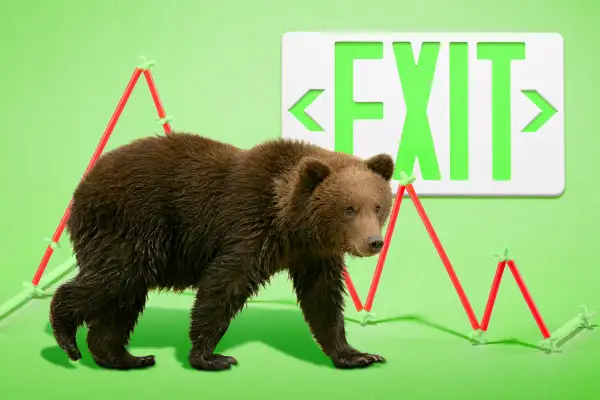How to Know When the Bear Market Is Over — and Why You Shouldn't Wait to Invest
Money is not a client of any investment adviser featured on this page. The information provided on this page is for educational purposes only and is not intended as investment advice. Money does not offer advisory services.

New year, new bull market... hopefully.
The S&P 500 — an index of stocks often used as the benchmark to measure how U.S. stocks are doing overall — kicked off 2022 near an all-time high before tumbling and ending the year down 19.4%. You likely heard the term "bear market" recently, as the S&P 500 officially fell into one in June.
Now, it's 2023, and the stock market is still struggling. But what exactly needs to happen for the bear market to end?
"It's not quite as clear cut as we would prefer," says Ryan Detrick, chief market strategist, at Carson Group. "No one rings a bell at the low, no one rings a bell at the high."
But here's what investors should know.
A bear market is generally considered to have happened when a stock or broad index (like the S&P 500) falls at least 20% from its most recent high. The opposite is a bull market, when prices rise at least 20% from bear market lows.
To determine how stocks are performing overall, experts tend to look at the three major indexes: the S&P 500, the Dow Jones Industrial Average and the Nasdaq Composite. Detrick analyzed market data for Money to determine what level each index needs to reach for the bear market to be considered over.
The Dow bottomed on Sept. 30, 2022, and actually exited its bear market on Nov. 30. But that doesn't mean stocks are out of the woods.
The S&P 500's most recent closing low was 3,577.03 points on Oct. 12, 2022. A 20% rally from there would be a close of 4,292.44, according to Detrick. At the market's close on Wednesday, it was 3,969.61.
Meanwhile, the tech-heavy Nasdaq Composite hit a new closing low on Dec. 28 at 10,213.29. A 20% rally would be 12,255.95. At the market's close on Wednesday, it was 10,931.67.
Should you wait for the bull market to invest?
While it may be tempting to wait until stocks seem to be on their way back up to invest, doing so can mean missing out on opportunities.
"You've missed 20% of a rally if you're just waiting for this magical 20% level," Detrick says.
Instead of trying to time the market, financial advisors tend to recommend a strategy called dollar-cost averaging. Doing so entails investing a set amount of money at regular intervals, like $100 every month.
That way you can take advantage of the eventual recovery without having to know exactly when to enter and exit the market — something that's very hard to do, even for Wall Street professionals.
Here’s What Investing Experts Are Watching in 2023, From Inflation to China’s Economic Reopening

